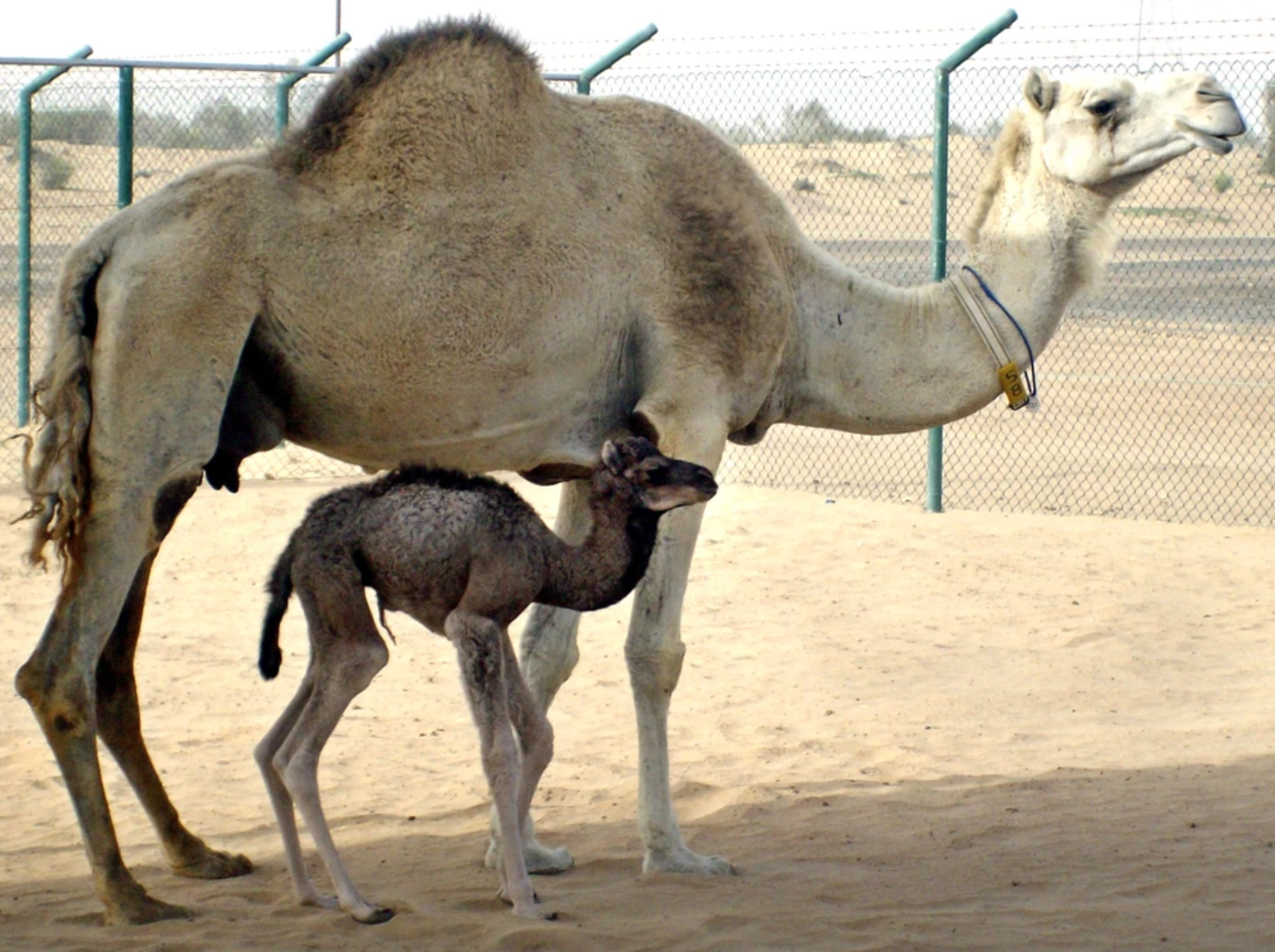In the UAE, camels are far more than animals — they are symbols of tradition, status, and national pride. From camel racing and beauty contests to their historic role in Bedouin life, camels occupy a central place in Emirati identity. As biotechnology advances, camel cloning is emerging as a powerful tool to preserve and enhance this cultural heritage.
Why Cloning Camels?
Over the past two decades, selective breeding has produced camels with exceptional traits: elite racing speed, rare coat colors, strong endurance, and ideal conformation for beauty pageants. These animals are incredibly valuable — with top-performing camels fetching millions of dirhams in auctions.
Cloning offers a way to preserve and replicate these elite genetics. Unlike traditional breeding, which produces genetic variation, cloning creates a genetic twin of the donor camel, allowing owners to extend bloodlines, preserve rare traits, and reduce breeding risk.
For owners, cloning presents a form of insurance. If an irreplaceable camel passes unexpectedly, its DNA can still live on. This is particularly important in preserving champion racing lines, where performance traits are difficult to replicate naturally.
The Camel Cloning Process
Camel cloning involves the following steps:
- Collecting tissue samples (often from skin or ear) from the donor camel
- Culturing live cells in a laboratory
- Using somatic cell nuclear transfer (SCNT) to create embryos
- Implanting embryos into surrogate female camels
- Monitoring and caring for the surrogate through gestation
The result is a healthy baby camel, born with the exact DNA of the original. These cloned camels can grow to match their donor in performance, appearance, and — in some cases — temperament.
It’s a meticulous, high-precision process requiring strong coordination between veterinarians, lab teams, and breeding experts. Live cell culture is essential, which is why early biopsy and cryopreservation are recommended long before an animal shows signs of aging.
Heritage Meets Innovation
What makes camel cloning in the UAE unique is its intersection with tradition. The practice is being embraced not only by scientists but by sheikhs, breeders, and cultural institutions.
Some families clone camels to honor animals that played a historic or sentimental role. Others aim to preserve regional bloodlines that might otherwise disappear. Racing stables and camel beauty pageant organizers are also showing interest, seeing cloning as a tool to maintain excellence and reduce the risk of losing once-in-a-generation camels.
There’s also growing pride in biotech sovereignty — developing world-class capabilities to support heritage and science simultaneously. The UAE's embrace of camel cloning demonstrates its commitment to combining modern innovation with cultural respect.
Challenges and Opportunities
Camel cloning is still a specialized and evolving field. Challenges include:
- High costs (cloning a camel typically starts around $100,000 USD)
- Limited success rates (especially for first-time embryos)
- Need for advanced veterinary infrastructure
However, the UAE is uniquely positioned to lead this field. With dedicated research centers, government support, and a strong heritage incentive, the country is building expertise in animal biotechnology.
Skytyx works with veterinary teams and local institutions to provide:
- Biopsy coordination for elite camels
- Cell culture and DNA storage
- Embryo creation and coordination with international cloning labs
- Education for owners and handlers on preservation best practices
New developments in AI-assisted monitoring, embryo viability scoring, and tissue engineering are already improving cloning efficiency and scalability.
The Future of Emirati Camel Science
As interest grows, camel cloning is expected to become more integrated into the UAE’s broader goals of sustainability, cultural preservation, and food security. In addition to racing and breeding, cloned camels may play a role in agriculture, tourism, and biomedical research.
We envision a future where:
- Elite camels are archived biologically, with their cells banked for future generations
- Cross-border camel genetics programs emerge across the Gulf and North Africa
- Cultural heritage is protected not only in museums but in living, breathing animals
- Cloned camels may be bred with others to diversify or stabilize traits over time
The potential extends to creating disease-resistant lines, restoring lost or endangered camel breeds, and exploring camel applications in pharmaceutical production (such as using camel antibodies in biotech).
Continuing the Legacy
Camel cloning is more than a technical achievement — it’s a way to safeguard a living legacy. In the UAE, where camels remain woven into the national story, preserving their best qualities through science is both visionary and deeply respectful.
As demand increases, Skytyx is expanding its work with camel owners, breeders, and cultural stakeholders to provide secure, ethical, and future-ready cloning pathways.
If you have a camel worth preserving, now is the time to act — not just for today’s prestige, but for tomorrow’s legacy. The story of your champion doesn't have to end — it can begin again, with science on your side.
